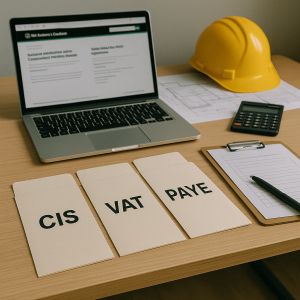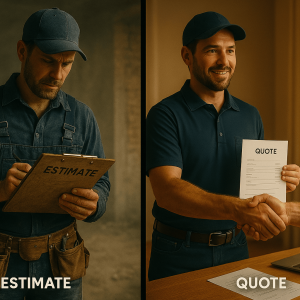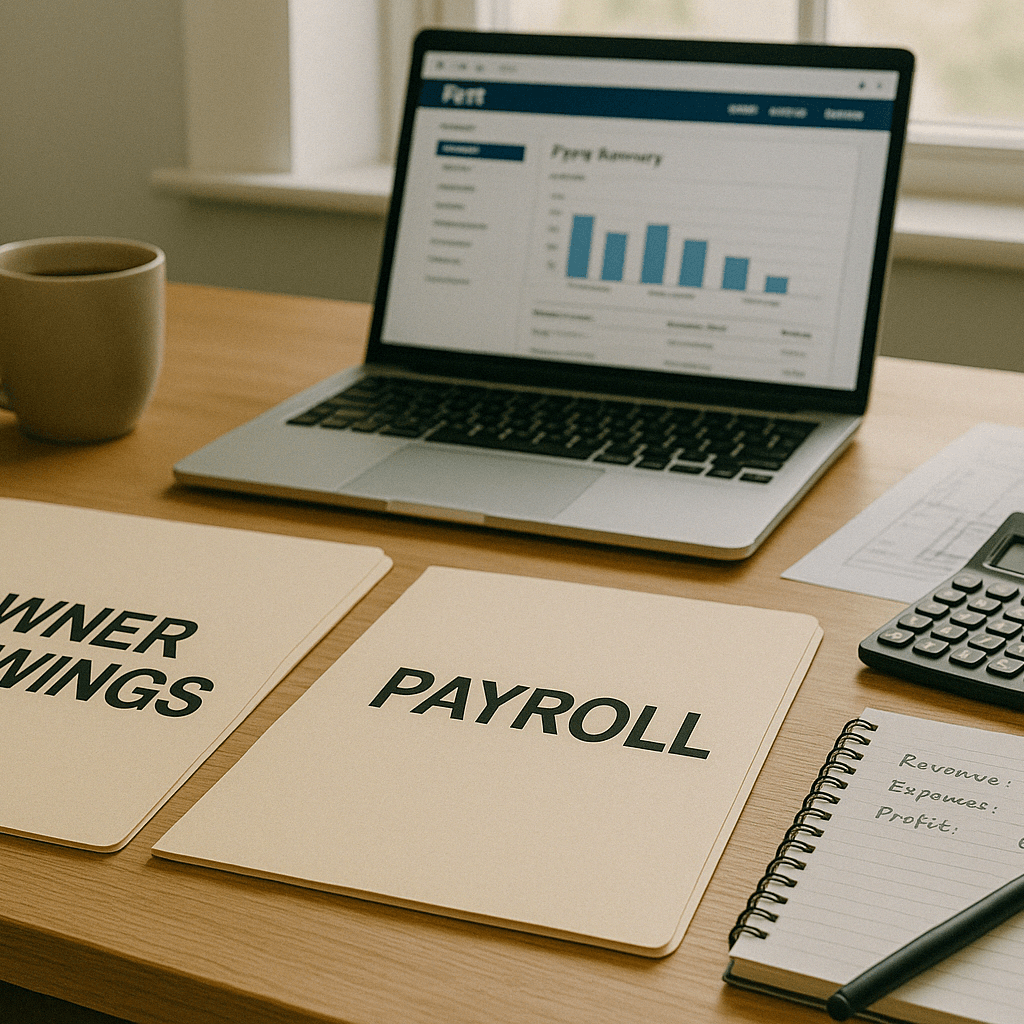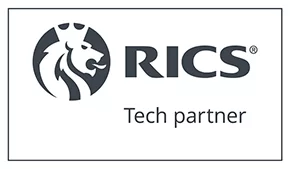If you’re starting a construction business in the UK, it’s easy to get overwhelmed with acronyms like CIS, VAT, and PAYE. This guide breaks down when and why you need to register for each—so you stay compliant, get paid properly, and avoid costly mistakes.
This post is part of our UK construction startup series. For the full setup guide, read our How to Start a Construction Business in the UK.
Table of Contents
- 1. Construction Industry Scheme (CIS)
- 2. Value Added Tax (VAT)
- 3. PAYE for Employers
- 4. Common Mistakes to Avoid
- 5. Summary & Next Steps
- 6. FAQs
1. When to Register for CIS
The Construction Industry Scheme (CIS) applies to most construction work in the UK. If you’re self-employed and work as a subcontractor for another builder or firm, you must register with HMRC under CIS.
Are you a subcontractor?
You must register for CIS if you work for a contractor but are not on their payroll. You can register as a sole trader, partnership, or limited company.
What if you hire other subcontractors?
Then you’re also a contractor. In that case, you must register as both a subcontractor and a contractor under CIS.
When to register:
- As soon as you plan to take on work from another contractor
- Before invoicing for your first subcontracted job
Why register?
- Registered subcontractors get taxed at 20 percent on labour
- Unregistered subcontractors get taxed at 30 percent
How to register:
Register online with HMRC using your UTR and National Insurance number. You can also apply for Gross Payment Status if your books are up to date and your turnover is high enough.
2. When to Register for VAT
VAT registration is a legal requirement for businesses whose taxable turnover exceeds the annual threshold. For 2025, that threshold is £90,000.
What is VAT?
Value Added Tax (VAT) is added to most goods and services. If you’re VAT registered, you add VAT to your invoices and pass that money to HMRC quarterly.
When registration is mandatory:
- Your 12-month turnover goes over £90,000
- You expect to go over the threshold in the next 30 days
When registration is voluntary:
You can register early, even if below the threshold. Some builders do this to:
- Look more professional to clients
- Reclaim VAT on business expenses
- Join the Flat Rate Scheme for simplified returns
Reverse Charge VAT Rules
Most B2B construction work now falls under the VAT Reverse Charge. You do not collect VAT from other contractors. Instead, they account for both input and output VAT themselves. This must be shown clearly on your invoices.
3. When to Register for PAYE
PAYE (Pay As You Earn) is HMRC’s system for collecting Income Tax and National Insurance from your employees’ wages.
When do you need to register?
- You pay an employee more than £123 per week
- You provide staff with benefits or pensions
- You deduct tax or National Insurance from their pay
What about yourself?
If you’re a director of a limited company, you may want to register for PAYE to pay yourself a small salary. This is often used in combination with dividends for tax efficiency.
Read our guide on paying yourself
4. Common Mistakes to Avoid
- Delaying CIS registration and losing 10 percent more income to tax
- Missing the VAT threshold and facing penalties
- Putting subcontractors on payroll incorrectly
- Incorrect VAT invoicing under reverse charge rules
5. Summary & Next Steps
- Register for CIS as soon as you subcontract or take on subcontracted work
- Register for VAT once you hit £90,000 turnover—or earlier if advantageous
- Register for PAYE if you employ others or pay yourself a director’s salary
Want to cover all your bases? Read our full Construction Startup Guide.
6. Frequently Asked Questions
Do I need to register for CIS if I’m a sole trader?
Yes. If you’re working as a subcontractor in construction for a contractor, you must register for CIS even if you are a sole trader.
What happens if I don’t register for VAT on time?
You may be fined and required to backdate VAT payments to when your turnover first exceeded the threshold. Interest and penalties may also apply.
Is PAYE the same as CIS?
No. CIS applies to subcontractors in construction and involves tax deductions at source. PAYE is used when you employ staff and need to process their wages through HMRC.
Can I register for VAT voluntarily?
Yes. You can register before reaching £90,000 turnover if you want to reclaim VAT on business expenses or use the Flat Rate Scheme.
What is the Flat Rate VAT Scheme?
A simplified VAT scheme for small businesses. You pay a fixed percentage of your turnover to HMRC instead of calculating input and output VAT separately.
How do CIS tax deductions work?
Contractors deduct 20 percent tax from your labour charges and send it to HMRC. You get paid the net amount and reclaim overpaid tax through self-assessment.
Do I need to register for PAYE if I only use subcontractors?
No. If your team is made up of self-employed subcontractors under CIS, you do not need PAYE unless you hire actual employees or pay yourself a salary.
What is gross payment status under CIS?
If you qualify, you can receive full payments from contractors without any tax deducted. You then pay tax through your own self-assessment or company returns.
When does the VAT reverse charge apply?
When both supplier and customer are VAT-registered and working in construction under CIS. The customer accounts for the VAT rather than the supplier collecting it.
Can limited companies register for CIS?
Yes. Limited companies can be subcontractors and/or contractors under CIS. They can also apply for gross payment status and must report CIS deductions correctly.











